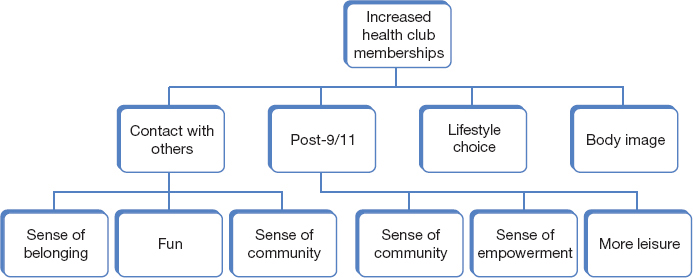Organizing Classification
Classifying in writing serves primarily as a means of organization—of creating a framework for the presentation of information, whether in a few paragraphs of an essay or in an entire book. This section surveys several examples of classifying, ranging from a simple two-level classification to a complex multilevel system.
Loughram’s two categories show that the basis for his classification is the seriousness of the crimes.
The simplest classification divides a general topic into two subtopics. Here is an example by Edward J. Loughram from a proposal to keep at-risk teenagers out of jail and help them lead productive lives. Before he can present his proposed solution, Loughram has to get readers to see that juvenile offenders are not all the same. He does this by explaining that although statistics show that the number of juvenile offenders is rising, they do not take into account the fact that there are two distinct groups of young people getting into trouble. He classifies juvenile offenders into these two categories to argue that the problem of delinquency can be solved, at least in part, by interrupting the criminal paths of the second group:
Two primary factors explain the growing numbers of juvenile offenders. First, there is indeed a rise in serious crime among young people, fueled by the steady stream of drugs and weapons into their hands. These dangerous offenders are committed—legitimately—to juvenile-correction agencies for long-term custody or treatment.
But a second, larger group is also contributing to the increase. It consists of 11-, 12-, and 13-year-old first-time offenders who have failed at home, failed in school, and fallen through the cracks of state and community social-service agencies. These are not serious offenders, or even typical delinquents. But they are coming into the correctional system because we have ignored the warning signs among them.
—EDWARD J. LOUGHRAM, “Prevention of Delinquency”
From Loughram’s essay, we see how a writer can use a simple two-category classification to advance an argument. The student essay by Sheila McClain (on pp. 409–14 of Chapter 9) offers a somewhat more complex classification to analyze the reasons people join health clubs. The following figure below offers a tree diagram of her analysis:

What the tree diagram shows at a glance is that in a classification system, some categories, such as “sense of belonging” and “fun,” are on the same level, or coordinate. Some are on a higher level, or superordinate. And some are on a lower level, or subordinate. The highest level represents the most general category, and each lower level identifies increasingly specific types. If McClain took her classification to the most specific level, she would name individuals as examples of people who joined health clubs for each of the reasons she names.
EXERCISE 17.1
Turn to the concept explanation in Chapter 4, “Attachment: Somebody to Watch over You” (pp. 123–28) and make a tree diagram of the classification in paragraphs 4–7. What do you think is Patricia Lyu’s basis for classification? Does each item seem to be placed in an appropriate category and at the proper level?
Question
EXERCISE 17.2
Review the essays you have written so far for this class or for another class, looking for an essay in which you used classifying. What was the purpose of your essay and your basis for classifying? Construct a tree diagram of your classification to see whether each item can be placed in an appropriate category and on the proper level.